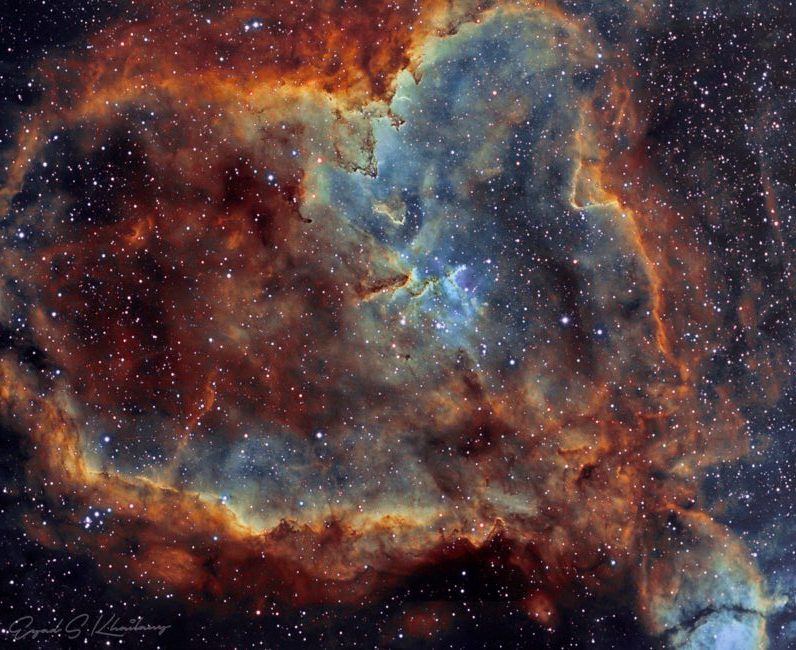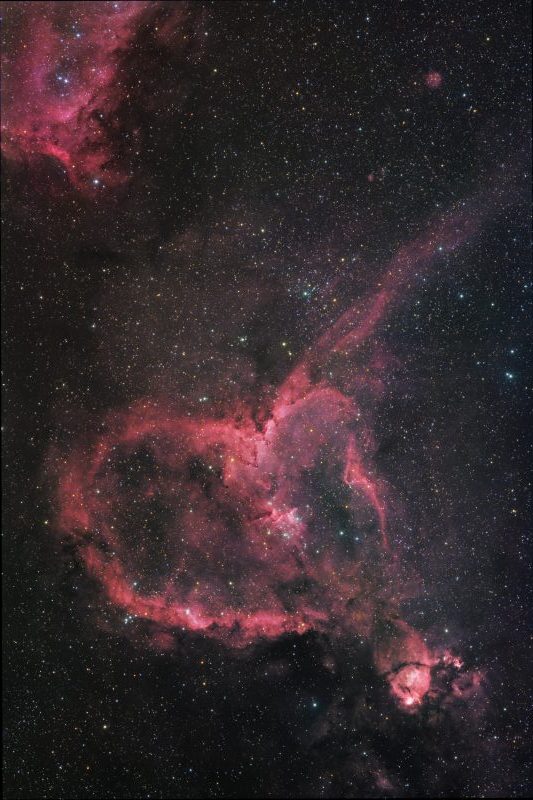
Check out this amazing image of the interior of the Heart Nebula, taken by Eyad Khailany from Erbil, Iraq. Eyad is a member of the Association of Young Astronomers and a coordinator for Astronomers without Borders. He gathered more than 10 hours of light, between clouds, over the course of a week, to create this image. Eyad’s composite image is exquisite. Photographic and processing techniques for Earth-based astronomical images are really becoming amazing! This composite brought to mind images of the Heart Nebula taken with the Hubble Space Telescope. See a shot from Hubble, below.
The Heart Nebula as an emission nebula
There are dark nebulae in space, hiding the light of stars shining behind them. And then there are emission nebulae, which are glowing clouds in space, shining with the light of ionized gases. Usually, for emission nebulae, there’s a hot nearby star or stars blasting into the space cloud, making it glow. Eyad described the Heart Nebula’s designation as an emission nebula:
The brightest part of the nebula (a knot at its western edge) is separately classified as NGC 896. It was the first part of the nebula to be discovered. The nebula’s intense red output and its morphology [shape] are driven by the radiation emanating from a small group of stars near the nebula’s center. This open cluster of stars, known as Collinder 26 or Melotte 15, contains a few bright stars nearly 50 times the mass of our sun. It contains many more dim stars that are only a fraction of our sun’s mass.
Thanks, Eyad, for sharing your amazing image of the Heart Nebula!

Bottom line: Eyad Khailany in Erbil, Iraq, created an amazing long-exposure image of the Heart Nebula, between clouds, over the course of a week.











